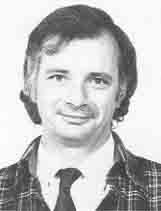Most Israelis grow up learning about archaeology much as children in Washington, D.C., grow up learning about the U.S. Government. Family outings in Israel often mean trips to Herodium or Megiddo, just as family outings in Washington include visits to the FBI Building or to Capitol Hill to see Congress in session. But few Israeli youngsters have as their escort to sites like Beth She’arim and Tell Qasile an uncle who is one of the country’s leading archaeologists. Amihai Mazar was just born lucky. From the age of six he was exploring the excavations of his uncle Benjamin Mazar, and at 15 he joined the team at Beth She’arim.
Now an established and respected archaeologist himself, native-born Amihai Mazar represents a new generation of Israeli archaeologists. In

“Benjamin Mazar Reminisces,” an interview with the elder Mazar by Bill Clark, gives us the perspective of the first generation of Jewish archaeologists working in the Land of Israel. In the 1930s, 40s, and even 50s, staunch idealism and a fervor to uncover evidence of their Biblical ancestors amply compensated these pioneers for having to cope with primitive working conditions and a persistent lack of manpower and funds.
Bill Clark is a free-lance writer, a naturalist, and a teacher at the Adult Education Institute of Conservative Judaism in Jerusalem. Originally from the United States, Clark has lived in Israel for several years with his wife and son. A stint as a wildlife ranger at the Hai Bar Biblical Wildlife Refuge led him to write The Paper Ark, a book about Biblical animals, and “Animals of the Bible—Living Links to Antiquity,” BAR 07:01.
At the end of the 19th century, a German priest discovered a mosaic floor depicting a basket of bread flanked by two fish in the ruins of a Byzantine church by the Sea of Galilee that commemorated the miracle of the loaves and fishes. Partially restored in the 1930s, the entire floor, which also displays an exquisite array of Galilee flora and fauna, has now been completely restored, and an authentically reconstructed Byzantine church has been erected above it. In a lavishly illustrated article, “Loaves and Fishes Mosaic Near Sea of Galilee Restored,” Dodo Joseph Shenhav, the mosaics’ restorer, describes the innovative restoration system he developed that will allow future restorers to lift the Tabgha mosaics in neat sections, preserving the subtle patterns of tessarae on the surface while a new foundation is poured.

As head of the restoration laboratories of the Israel Museum, Shenhav is responsible for fragile ancient scrolls as well as for mosaics. His engrossing account of scientists’ efforts to preserve the Dead Sea Scrolls appeared in “Saving the Dead Sea Scrolls for the Next 2,000 Years,” BAR 07:04. Born in Hungary, Shenhav immigrated to Israel as a young boy. A sculptor as well as a conservator, he has studied art and restoration in Israel, Rome, London and Amsterdam.
Complementing Shenhav’s article, archaeologist Ulrich Hübner’s “The Restored Byzantine Church at Tabgha” describes the new basilica enclosing the mosaics. A teacher of Biblical archaeology and Old Testament studies at the University of Mainz in West Germany, Hübner has excavated at Beer-Sheva and Tel Masos; this summer he will be an area supervisor at Tel Kinneret.
Another mosaic of exceptional artistry covers the floor of a third-century A.D. synagogue near the Sea of Galilee. The mosaics display an extraordinary juxtaposition of subjects: the complete zodiac, with the Greek sun god Helios at its center, abutting a detailed depiction of two menorahs flanking an Ark of the Law. In “Synagogue Excavation Reveals Stunning Mosaic of Zodiac and Torah Ark,” we present the many theories put forth, including that of the synagogue’s excavator, Moshe Dothan, to explain why pagan gods and symbols occupy the main prayer hall of a synagogue.
Throughout modern times, the sale of antiquities has been a thriving business in the markets of every major Middle Eastern city, always tempting forgers to take advantage of eager buyers. When documents purporting to be older than the Dead Sea Scrolls came on the Jerusalem antiquities market in the late 1960s, they were bought by a respected scholar and quickly acclaimed by another scholar as examples of the long-elusive Philistine language. But soon afterwards the script on the “Philistine” parchments was recognized as a crude copy of a famous eighth-century B.C. Hebrew inscription. “Clumsy Forger Fools the Scholars—But Only for a Time” graphically illustrates the forger’s technique as he applied it on camelskin parchments and on a stone amulet.
You can still make plans to join a dig this summer in Israel. Turn to

